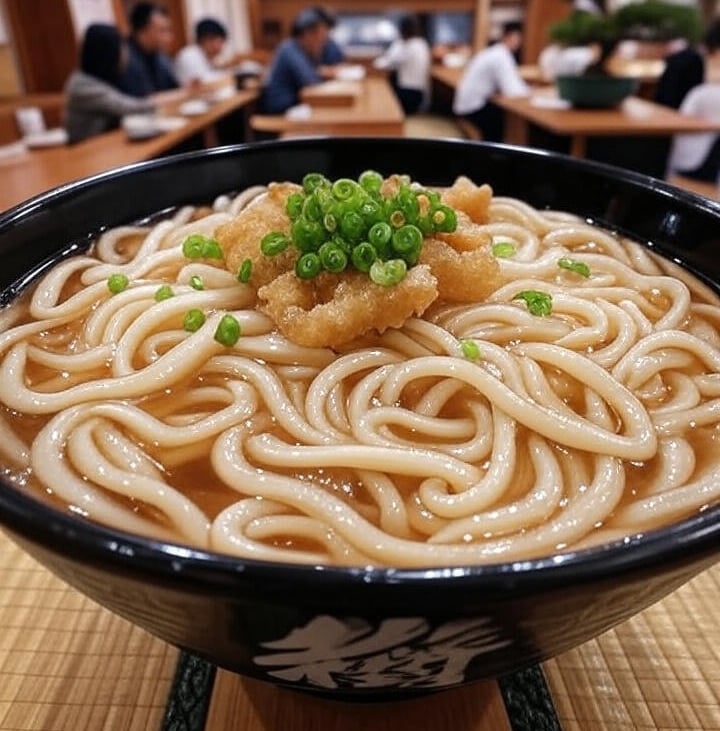Welcome to Noodles of Asia ! - A Woke Noodle Blog
Discovering Udon: The Thick, Chewy Delight of Japanese Cuisine


Hey there, noodle lovers! If you've ever slurped down a steaming bowl of thick, bouncy noodles in a savory broth, chances are you've encountered udon. These wheat-based wonders are a staple in Japanese cuisine, known for their satisfying chew and versatility. Whether served hot in winter or chilled in summer, udon has a way of comforting the soul. In this post, we'll dive into its origins, history, some fun facts, and a few famous recipes to inspire your next kitchen adventure. Let's get slurping!
Origins and History of Udon
Udon noodles are believed to have originated in China, where early versions resembled dumpling skins or square-cut dough rather than the long strands we know today. They were likely introduced to Japan during the Tang dynasty (618–907 CE), brought by monks or scholars. One popular legend credits the monk Kukai (also known as Kobo-daishi), who studied in China and returned to Japan around 804 CE, teaching the noodle-making technique in what is now Kagawa Prefecture. This area, formerly Sanuki Province, is often hailed as the birthplace of udon, with records dating back 1,200 years.
During Japan's Nara period (710–794), udon gained traction amid famines, providing a hearty, wheat-based food source. It wasn't until the Edo period (1603–1868) that udon exploded in popularity, with regional specialties emerging and noodle stalls popping up. Pilgrims visiting shrines like Kotohira in Kagawa helped spread its fame, munching on udon at shrine gates. Over time, udon influenced cuisines beyond Japan—in Korea, it's called udong; in Palau and the Philippines, adapted versions like odong reflect Japanese colonial history. Today, udon is a global favorite, with modern twists keeping it fresh.
Interesting Facts About Udon
Udon isn't just food—it's a cultural icon! Here are some intriguing tidbits:
Regional Variations Galore: Japan boasts diverse udon styles. Sanuki udon from Kagawa is famed for its firm, chewy texture, thanks to the region's ideal wheat-growing climate. In Nagoya, miso-nikomi udon simmers in rich red miso soup, while Hokkaido's curry udon adds a spicy kick. Some types, like Goto udon, are even coated in camellia oil for preservation.
Noodle Kneading Traditions: Making udon involves intense kneading—sometimes by foot! This creates that signature elasticity. In Kagawa, families use "Sanuki Udon Early Education Kits" to teach kids the art from a young age.
Consumption Craze: Kagawa residents eat udon at three times the national average in Japan. The prefecture even has udon-themed mascots, souvenirs, and movies promoting it. Fun fact: Some udon shops have broth-dispensing faucets for self-service!
Global Adaptations: In the U.S., chains like Marugame Udon serve it with tempura and even limited-edition udon shakes. And did you know udon can be vegan? Many recipes skip animal products entirely.
Historical Artifacts: The oldest depiction of Sanuki udon is in a 300-year-old painting of a festival, showing noodle-making much like today.
These facts highlight how udon has evolved from a simple survival food to a beloved emblem of Japanese ingenuity.
Famous Udon Recipes
Udon's beauty lies in its adaptability. Here are some iconic recipes, from comforting classics to innovative twists. (Note: These are overviews—adjust to taste and check full recipes online for details.)
Kake Udon: The simplest form—boiled udon in a mild dashi broth made from soy sauce, mirin, and bonito flakes, topped with scallions. Perfect for beginners and a quick meal.
Kitsune Udon: Originating in Osaka, this features udon in broth topped with sweet fried tofu (aburaage). The name "kitsune" means fox, referencing folklore where foxes love fried tofu.
Tempura Udon: Hot udon soup with crispy prawn or vegetable tempura on top. The contrast of chewy noodles and crunchy batter is irresistible.
Yaki Udon: Stir-fried udon with veggies, meat or tofu, soy sauce, and sesame oil. Add cabbage, scallions, and a sprinkle of sesame seeds for extra flair—great for using leftovers.
Curry Udon: Udon mixed into a thick Japanese curry roux, often with onions, carrots, and potatoes. It's hearty and warming, with regional versions like Biei's unique take in Hokkaido.
Zaru Udon: Chilled noodles on a bamboo tray, dipped in tsuyu sauce with nori seaweed. Ideal for hot days, sometimes paired with tempura.
If you're feeling adventurous, try making udon from scratch: Mix flour, salted water, knead vigorously (maybe with your feet!), rest, roll, and cut. It takes practice but yields the freshest noodles.
Wrapping It Up
Udon noodles are more than just a meal—they're a thread connecting ancient China to modern Japan and beyond, with endless variations to explore. Whether you're craving a cozy bowl on a rainy day or a refreshing cold dish in summer, udon delivers. Next time you're at a Japanese restaurant or in your kitchen, give one of these recipes a whirl. What's your favorite udon style? Drop a comment below—I'd love to hear! Until next time, happy noodling! 🍜
